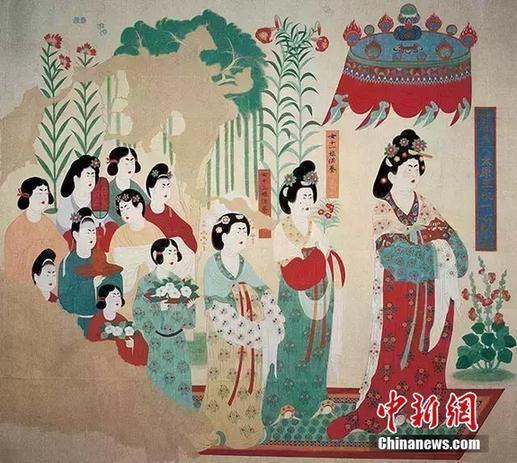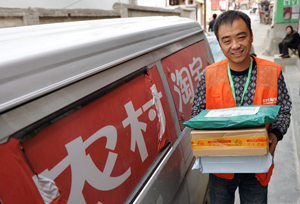Mogao Grottoes
Female characters revealed in Mogao Grottoes (Ⅰ)
Updated: 2016-03-11By Li Xiaoxu ( chinadaily.com.cn )
 |
|
The fresco shows the female benefactors of grottoes during the Tang Dynasty (AD 618-907) at Mogao Grottoes. [Photo/Chinanews.com] |
Female Bodhisattvas, benefactresses and several other characters from Mogao Grottoes' classic frescoes were inspired by women in Tang Dynasty, said Dunhuang Research Academy on March 8.
Mogao Grottoes, situated at Dunhuang city in Northwest China's Gansu is a system of 492 temples and is honored as one of the most valuable discoveries of the 20th century.
It has the world's largest and most abundant collection of Buddhist artwork. There are 735 caves accommodating 2,415 colored sculptures and 4.5 square meters of frescoes.
The construction of the Mogao Caves near Dunhuang is generally taken to have begun sometime in the fourth century AD when a Buddhist monk named Le Zun was inspired to build a cave and later other monks joined him. By the Tang Dynasty, the number of caves had reached more than a thousand.
According to the academy, the frescos made in Tang Dynasty (AD 618-907) have the female characters inspired by women at that time, revealing the women's appearance, clothing and status.
For example, many scholars supposed that the prototypes of Apsaras in frescoes are modeled on young noble women such as queens, princesses, wives and daughters of nobility in ancient China.
The historical documents recorded that Apsara was the ideal woman for people in the ancient time, because of her compassion and perfect appearance.


